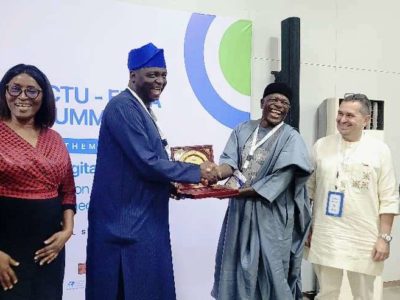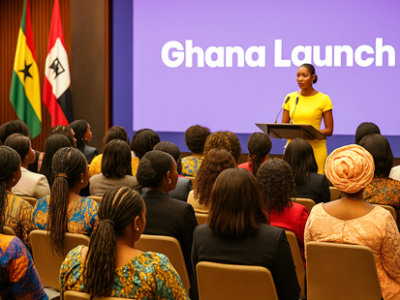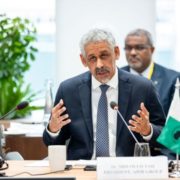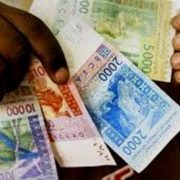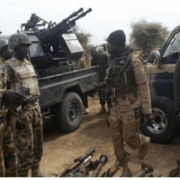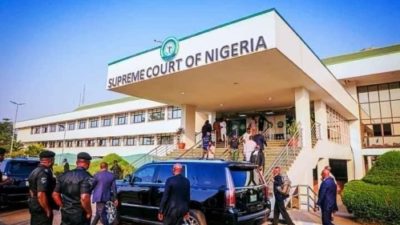Amnesty International has asked Senegalese authorities to investigate extrajudicial killings as tensions and violence continued to rise in the country.
Amnesty International’ stated in Dakar that the “Senegalese authorities must immediately independently and transparently investigate the deaths of at least twenty-three people, including 3 children, during the violent demonstrations of theerand 2 June 2023 and shed light on the presence of armed civilian personnel operating alongside security forces, Amnesty International said today after collecting testimony and documenting the deaths recorded during those days.”
According to Amnesty International’s county, at least 23 people have been killed during the violent protests that broke out in Dakar and Ziguinchor, since theerJune, and 390 people were injured according to the Senegalese Red Cross. These demonstrations were marked by several human rights abuses, including excessive use of force and violations of freedom of expression and information, through the suspension of access to social networks and the mobile Internet.
“We call on the authorities to conduct a credible, independent and impartial investigation into the situation of these deaths and to ensure that those responsible for unlawful killings are prosecuted according to fair trial standards. In accordance with international law, law enforcement agencies must use firearms only in exceptional cases, in the event of an imminent risk of serious injury or death, and not for policing,” says Samira Daoud,Regional Director of Amnesty International’s West and Central Africa Office.
Amnesty International met with 18 people, including witnesses to cases of fatal use of force and relatives of victims. The organization also documented human rights violations through the analysis of videos and other documents such as death certificates and autopsy reports, including bullet injuries, resulting in the deaths of several protesters.
A bloody repression
At least 23 deaths, according to our figures, including several by bullets, were recorded in Dakar and Ziguinchor, during the violent demonstrations of theerand 2 June. Several public buildings and private businesses were ransacked by protesters, including the University of Dakar and the town hall of Pikine. Amnesty International met with relatives and families of the wounded and killed.
Bassirou Sarr, 31, tailor and resident of Pikine Guinaw-Rails (suburb of Dakar) died following a head shot on June 2. According to his brother Issa:
“Bassirou had his sewing workshop near Camp Thiaroye, and this Friday, June 2, there were spontaneous demonstrations in the area. Like many others, he went out to see this gathering of gendarmes and protesters near their workshop, when he was shot in his head. He died instantly and the soldiers of Thiaroye camp transported his body to the camp. They asked the gendarmes and protesters who were right outside their camp to disguise. We have lost our brother and we want justice to be done. Since Friday, we have not even been able to recover his body and inhume it properly.”
Amnesty International has been able to consult Bassirou Sarr’s death type certificate issued by Idrissa Pouye General Hospital in Grand Yoff, which states that the death is the result of “firearm head trauma”.
Like Bassirou Sarr, 38-year-old rapper Abdoulaye Camara, known as “Baba Kana”, 38, also lost his life in these demonstrations.
“On Saturday, June 3, Abdoulaye went to visit one of his friends in Ouagou Niayes. On his way back to Niarry Tally, he met a crowd of protesters and police officers and was shot. In videos that circulated widely on social media, we see that he was then beaten by the police officers of the HLM police station while he was on land and dragged in the street. Throughout the day on Sunday, we went back and forth to the police station of HLM and Dieuppeul to find out if he was there, but it was at the level of the brigade of Dieuppeul that we were told that a body supposedly ‘gun in the street’ had indeed been laid down there by the police Saturday evening. Finally, on Monday we were able to find his body at the Dalal Jamm Hospital in Guediawaye,” Djiby*, a relative of Abdoulaye Camara, told Amnesty International.
Amnesty International was able to analyze several videos showing police killing Abdoulaye Camara while on land and visibly ill.
Fallou Sall, a 17-year-old scrap worker in Thiaroye-sur-Mer, was shot dead on Friday, June 2 as he returned from work. According to his father met with Amnesty International, he died of his injuries the next day. He had been shot in his neck and, according to his father, he remained lying in hospital for a whole day without surgery. His family is waiting for autopsy results.
In Ziguinchor, Souleymane Sano (25 years) and Ousmane Badio (17 years old) were shot by police during the demonstrations of theerand 2 June.
Issa, Souleymane Sano’s friend, told Amnesty International: “I was with Souleymane Sano near the CIA complex when a police officer put a knee to the ground and shot him. We left our Lindiane district around 5pm this June 2 to demonstrate. To the CIA complex, the police called for reinforcements and fired tear gas grenades to disperse us, making us flee. Sulayman found himself in a dead end and hid behind a floor lamp when the police officer descended from the main track, targeted him and shot him. He was injured on the flank. I went to him, I shook him but he didn’t answer. Together with other protesters, he was put on a Jakarta motorcycle for the regional hospital, where he was declared dead.”
Amnesty International has been able to consultBurial certificate from Souleymane Sano who concludes that “violent death by chest trauma due to an impact of a firearm projectile”.
Ousmane Badio, 17, was also shot dead on 1erJune in Ziguinchor, during the demonstrations. According to his uncle and grandfather, Ousmane was shot 200m from his home in Korentas (Ziguinchor district), where demonstrations were taking place. “Ousmane came out at 5pm of the house this Thursday 1erJune. 15 minutes later, people came to tell us that Usman had fallen. It did not last outside. He was hit in the chest and lost a lot of blood. He was taken to Silence Hospital but he was losing a lot of blood along the way. Upon our arrival, he was declared dead. There were demonstrations near us; the young people threw pebbles and the police were retaliated with tear gas grenades. The witnesses told us that it was one of these policemen who shot at Ousmane and that after him, another individual, Souleymane Sarr, was shot by these same police officers. Since that day, his father has been in shock and cannot speak; Umania was his eldest son. “We’re here to help.”
Armed men dressed in civilian clothes alongside the police
The organization also noted the presence of armed men, dressed in civilian clothes, alongside the police. These men holding arms and violently attacking protesters were visibly identified in videos widely distributed on social media and which Amnesty International was able to analyse. At a press conference held on Sunday 4 June, Divisional Commissioner Ibrahima Diop, Director of Public Security, denied the presence of members of the defence or security forces dressed in civilian clothes and incriminated elements of “hidden forces” from abroad, having infiltrated demonstrators.
Amnesty International recalls that the African Commission on Human and Peoples’ Rights (ACHPR) guidelines stipulate that agents deployed in the context of demonstrations must bear visible individual identification marks in operation.
“The State must not allow the presence of individuals not identified as members of the police for law enforcement operations, nor the use of force. These are obvious violations of international law. Authorities must shed light on the role and function of these persons and prosecute them for violations committed”We’re here to help.”declarSeydi Gassama, Executive Director of Amnesty Senegal.
Violations of the right to freedom of expression
Between 4 and 6 June, the authorities decided to suspend internet access via mobile data. Access to social networks was suspended between 2 and 7 June. On 1 June, the Walf TV signal had been cut off, without prior notification as provided for in Article 192 of the Press Code, interrupting their coverage of the demonstrations. The National Council for the Regulation of Audiovisual (CNRA) denied any responsibility for this break, the third since March 2021. Walf TV’s YouTube channel, on which the channel had attempted to broadcast its programs after the suspension, was also disrupted.
In 2020, the ECOWAS Court of Justice, in a decision concerning Togo, ruled that voluntary restriction of access to the Internet during demonstrations violated the right to freedom of information and expression.
“These restrictions on the right to freedom of expression and informationare arbitrary measures contrary to international law, and cannot be justified by security imperatives. We call on the authorities to re-establish the Walf television signal and refrain from restricting access to social networks,” says Samira Daoud



